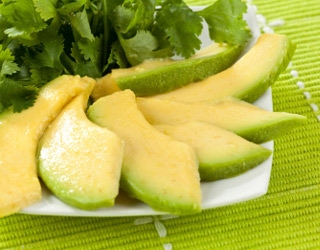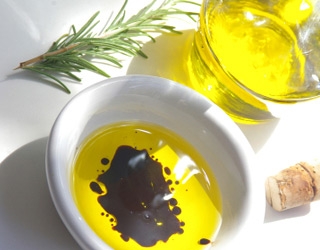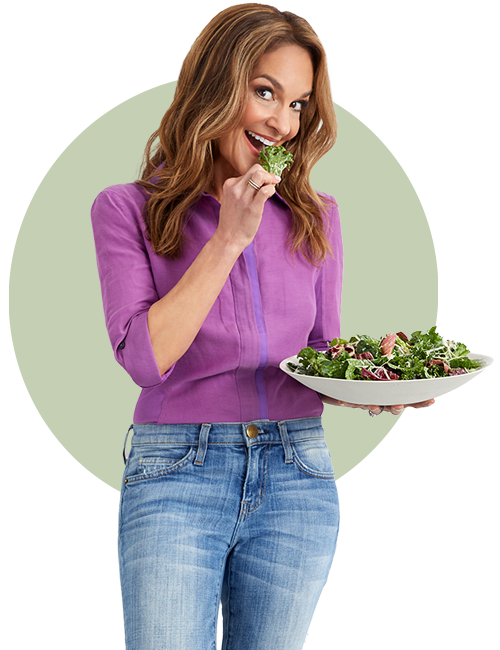5 Tips to Build a Healthier Salad
Not all salads are created equal.
Nothing sounds healthier than a salad, right? It may be, but not if you add the wrong ingredients. For example, a classic Cobb salad with chopped bacon, egg, blue cheese, avocado, and creamy dressing, or a standard restaurant chef’s salad loaded with Swiss cheese, roast beef, eggs, and dressing can cost you more than 1,000 calories and 80 grams of fat! For some people, that’s more than half their day’s worth of calories (and all their fat). That said, don’t give up on salads — they can be a filling, low-cal option and a great way to satisfy your daily vegetable requirements. Just follow my guidelines for making the perfect healthy salad — and you’ll never have to worry again.

Pile on the veggies
Pile on the veggies.
Take advantage of fresh vegetables and load them on top of your greens — at 25 calories or less per 1/2-cup serving you can’t go wrong. Choose a variety of colors to get the most health benefits — red bell peppers, broccoli, carrots, sugar snap peas, cucumbers, and red onions are all great choices. Be sure to stick with raw or lightly steamed vegetables and steer clear of ones that are fried or swimming in oily marinades.

Don’t forget the protein
Don’t forget the protein.
Your salad becomes a meal when you add the protein! If you’re opting for animal protein, select one lean source (or two if you’re extra-hungry), such as four egg whites or three ounces of skinless chicken or turkey breast, water-packed chunk light tuna, wild salmon, or lean sirloin steak. If you’re vegetarian or just want to mix it up, choose half a cup of cubed tofu or three-quarters of a cup of chickpeas, kidney beans, pinto beans, or other legumes. Stay away from caloric or processed meats like bacon and salami, and definitely skip anything fried or drenched in heavy sauce.

Choose one extra.
Choose one extra.
Extras are those items that typically add another dimension and flavor to your combo of greens, vegetables, and lean protein. While some of these extras are packed with nutrients, they’re also packed with calories and fat, so they should be added sparingly. Luckily, a little of these high-fat goodies goes a long way, so you won’t need more than one of the following (each of which is between 40 and 70 calories): 2 tablespoons cheddar, Parmesan, goat, Swiss, or feta cheese; 1 tablespoon chopped walnuts, pecans or sliced almonds; 1 tablespoon sunflower or pumpkin seeds; 1 ounce avocado; 10 small olives (canned/jarred in water); 1/4 cup croutons; 2 tablespoons dried cranberries or raisins.

Dress it up lightly
Dress it up lightly.
Some people eat salad only if it’s doused with dressing. Unfortunately, dressing can take a salad from fresh and nutritious to downright unhealthy. One tablespoon of your average vinaigrette is about 80 calories and one tablespoon of creamy ranch is almost 100 calories. Ask for the dressing on the side when ordering, and if the restaurant only offers regular (full-fat) varieties, limit your usage to one and a half tablespoons for an entrée salad and one tablespoon for a side salad. Whenever possible, choose light, low-calorie, or low-fat options. You can also make your own light vinaigrette using one part oil and three parts vinegar with some mustard, lemon, 100 percent fruit jam, or spices for added flavor.
Looking for some tasty salad dressings that won’t break the calorie bank? Try my Light Balsamic Vinaigrette or Light Buttermilk Ranch.

Not all salads are created equal
Not all salads are created equal.
Nothing sounds healthier than a salad, right? It may be, but not if you add the wrong ingredients. For example, a classic Cobb salad with chopped bacon, egg, blue cheese, avocado, and creamy dressing, or a standard restaurant chef’s salad loaded with Swiss cheese, roast beef, eggs, and dressing can cost you more than 1,000 calories and 80 grams of fat! For some people, that’s more than half their day’s worth of calories (and all their fat). That said, don’t give up on salads — they can be a filling, low-cal option and a great way to satisfy your daily vegetable requirements. Just follow my guidelines for making the perfect healthy salad — and you’ll never have to worry again.

